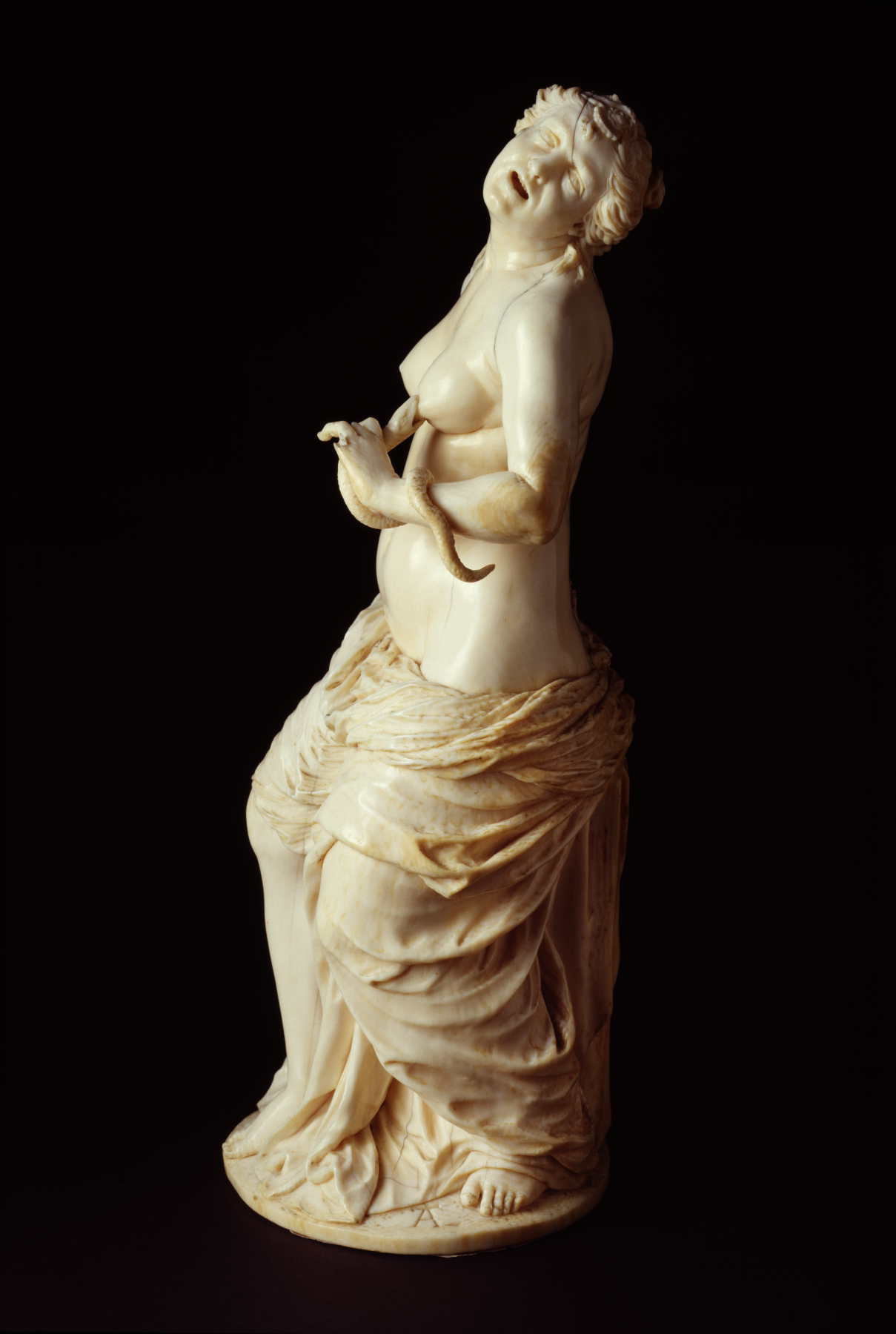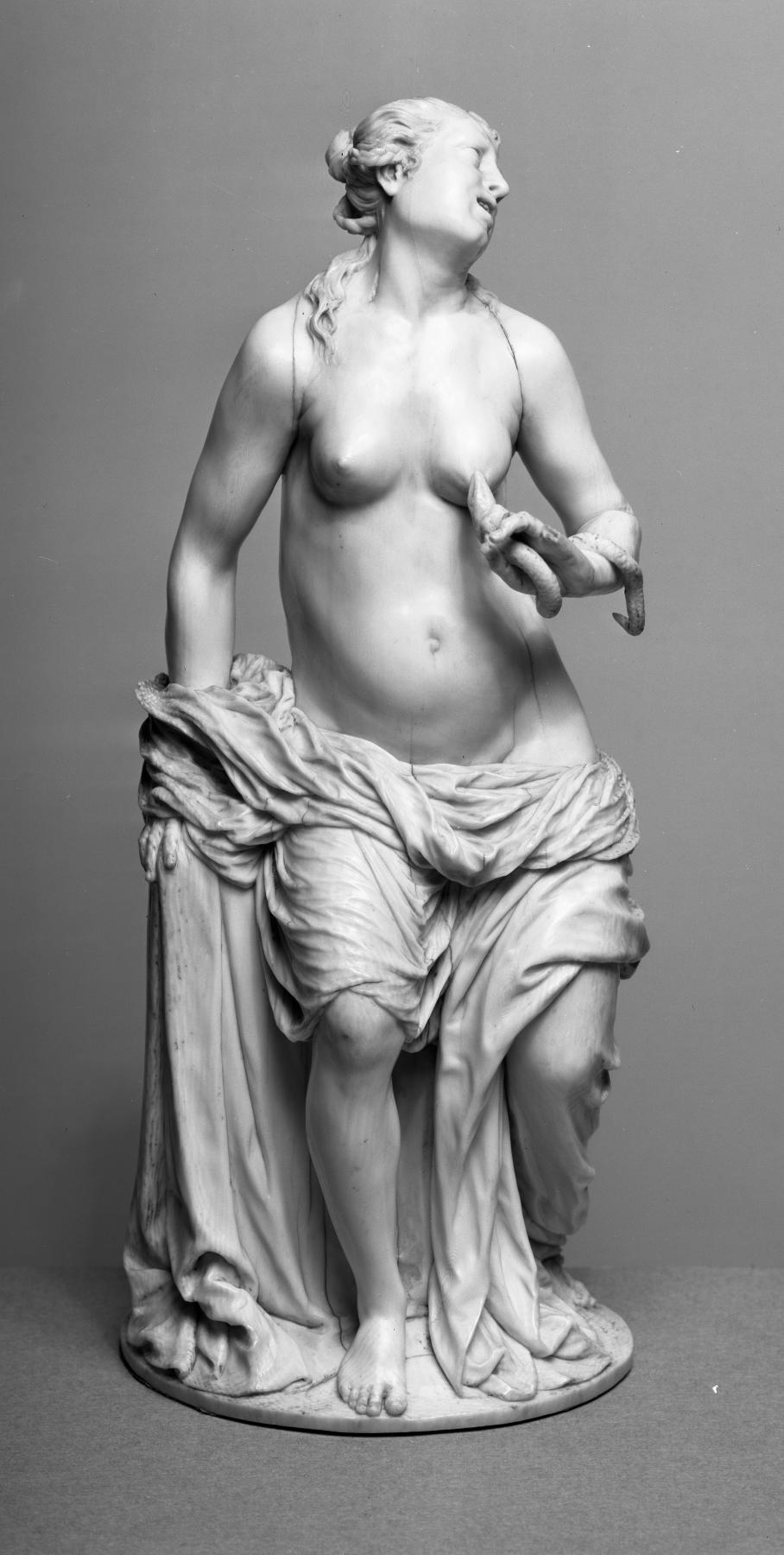Cleopatra
(Baroque Europe )
Queen of Egypt (51-30 BC) and celebrated for her seductive beauty, Cleopatra is depicted taking her own life with the bite of a poisonous serpent. Writhing in pain, she embodies the baroque taste for plump female beauty and intense emotion. Ivory's unique appeal to the sense of touch helps to convey the vulnerability of her flesh.
The piece is signed with the monogram of Adam Lenckhardt, renowned across Europe for the naturalism of his works in ivory.
Provenance
Provenance (from the French provenir, 'to come from/forth') is the chronology of the ownership, custody, or location of a historical object. Learn more about provenance at the Walters.
Ryfsnyder Collection [date and mode of acquisition unknown]; Josephus Jitta, Amsterdam [date and mode of acquisition unknown]; W. S. L. Schuster, London [date and mode of acquisition unknown]; Sale, Christie's, London, 1911, no. 24, lot 79; George R. Harding, London [date and mode of acqusition unknown]; Henry Walters, Baltimore, 1912, by purchase; Walters Art Museum, 1931, by bequest.
Exhibitions
| 1983-1984 | Ivory: The Sumptuous Art. The Walters Art Gallery, Baltimore. |
Conservation
| Date | Description | Narrative |
|---|---|---|
| 8/19/1982 | Treatment | cleaned; examined for condition |
Geographies
Germany, Wurzburg (Place of Origin)
Measurements
9 9/16 in. (24.3 cm)
Credit Line
Acquired by Henry Walters, 1912
Location in Museum
Accession Number
In libraries, galleries, museums, and archives, an accession number is a unique identifier assigned to each object in the collection.
In libraries, galleries, museums, and archives, an accession number is a unique identifier assigned to each object in the collection.
71.416




